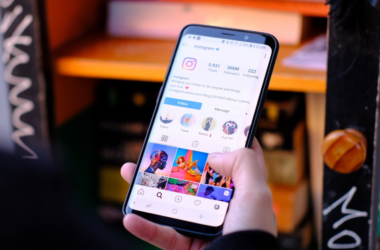- Tension: Despite new environments or routines, many find themselves mentally anchored to past experiences, unable to break free from lingering regrets or unresolved emotions.
- Noise: Popular culture often promotes the idea of “just moving on” as a simple act of willpower, ignoring the complex psychological processes involved in truly letting go.
- Direct Message: Letting go is not a singular decision but a practiced skill—by identifying hidden emotional contracts, processing unresolved feelings, and redefining personal narratives, individuals can release the past and embrace a more liberated present.
This article follows the Direct Message methodology, designed to cut through the noise and reveal the deeper truths behind the stories we live.
I thought leaving Chiang Mai for Singapore would be a clean break: new skyline, new routines, new ambitions. Yet every morning I caught myself replaying old conversations, second-guessing decisions I’d made years earlier. Geography had changed; the internal coordinates hadn’t.
That’s the dilemma most of us face. The past isn’t just memory—it’s architecture. Neuro-imaging studies show that unresolved emotional experiences keep the brain’s default-mode network humming in a low-grade loop of self-referential thought. Translation: we’re wired to ruminate unless we interrupt the circuit.
But brute-forcing yourself to “move on” rarely works. Letting go is less a single decision and more a skillset—one you can train, refine, and ultimately master.
1. Identify the invisible contracts you’re still honouring
Every lingering memory carries an implicit promise:
-
“If I stay angry, they’ll finally understand my pain.”
-
“If I keep replaying the failure, I won’t repeat it.”
-
“If I cling to who I was, I won’t be humiliated by change.”
Write yours down, brutally honest. Seeing them in black and white strips them of their unspoken power.
Reflection questions for you
-
What do I fear will happen if I stop thinking about this?
-
What need did that chapter once meet for me?
-
Can that need be met in a healthier way today?
If you struggle to articulate the contract, ask a friend to mirror the story back to you. Outsiders hear the subtext we miss.
2. Separate narrative from emotion
Early in my career I believed intellectual clarity alone would liberate me—until I realised I could explain my childhood wounds perfectly and still feel hijacked by them. Cognitive insight without emotional discharge is just sophisticated avoidance.
Practical drill
Take ten slow breaths, then locate where the memory lands in your body—tight chest, clenched jaw, sinking gut. Give the sensation forty-five seconds of uninterrupted attention. Allow it to swell, peak, subside. That wave-pattern is your nervous system completing a loop it never finished the first time.
Do this twice daily for one week. Most people report the story’s volume dropping from a shout to a murmur.
3. Grieve the secondary losses
Letting go isn’t simply releasing pain; it’s surrendering the identity built around that pain. When I wound down Ideapod, I wasn’t just shelving a platform—I was burying the version of myself known as “the guy who built a viral idea marketplace.” I had to mourn that ego-boost before I could design the next chapter.
Create a private farewell ritual: burn an old business card, play a song from that era and intentionally cry, or write a one-page eulogy to the relationship you’ve outgrown. Rituals tell the primitive brain, *“Yes, this ended—*and I survived.”
4. Rewrite the personal myth
Psychologists call this “narrative identity”: the story we tell about how we became who we are. Shifting it is liberating because the past can’t hurt you—only the meaning you assign to it can.
Storyboard method (15-minute exercise)
-
Title a blank page “Act I: Origin.” Summarise the past event in three sentences, fact-only.
-
Title the next section “Act II: Conflict.” Write the worst consequences you feared.
-
Title the final section “Act III: Transformation.” Describe one skill, boundary, or perspective you now possess because of that ordeal.
-
Underline the sentence that makes you feel strongest. Memorise it. That’s your revised myth.
5. Build present-moment anchors
Ruminative minds drift backward by default, so stack the deck in now’s favour.
-
Environmental anchor – Place a tactile object (a smooth stone, a coin) in your pocket. Each time you touch it, ask, “Where am I right now? What needs my attention this minute?”
-
Somatic anchor – Adopt a two-minute “state-break” movement (20 push-ups, a stair sprint, five deep squats). Physical exertion yanks neural focus into the present.
-
Social anchor – Message a friend a single line about something you’re working on today. Accountability drags the psyche out of yesterday’s fog.
6. Run micro-experiments in choosing differently
We don’t let go all at once—we practise disloyalty to the past in small, repetitive ways until the nervous system trusts the new pattern.
Pick one behaviour that keeps the old story alive. Maybe you scroll your ex’s profile, or reread negative feedback. Replace it with a 90-second alternative (breathwork app, jotting three things you’ll tackle this hour). Track adherence for 30 days. Success isn’t perfection—it’s noticing lapses faster each time.
7. Accept that closure is an inside job
I waited years for an apology that never came, until a mentor asked, “Would their remorse actually change what you need to do next?” It wouldn’t. Closure arrived the moment I stopped outsourcing it.
Write a letter you’ll never send, giving yourself the apology or explanation you wanted. Then delete or burn it. The point isn’t communication; it’s completion.
8. Let growth eclipse nostalgia
The surest way to defang the past is to build a present so engaging it can’t compete.
I schedule quarterly “discomfort retreats”: solo weekends where I learn something absurdly new—a Thai cooking class, freediving basics, whatever kicks my ego into beginner mode. Novelty lights up the brain’s reward pathways, making yesterday’s loop less enticing.
What stakes can you raise in your own life? Sign up for that 10 km race, pitch a project you’re 60 % ready for, take Mandarin lessons. Momentum is the antidote to rumination, as I mentioned in my Instagram reel below.
View this post on Instagram
A closing perspective shift
Letting go isn’t betrayal of who you were. It’s an act of fierce loyalty to who you’re becoming.
Picture two concentric circles. The inner ring is memory; the outer ring is possibility. When you cling to the past, you grip the smaller circle and call it safety. But your future—your richest, most original work—lives in the space beyond that ring.
Step into it. The past can visit, but it no longer gets to vote.
Prompt for you, right now
List one thing you’ll do in the next 24 hours that your “stuck” self would avoid. Do it, note how you feel, and watch the circle expand.
You’ll know you’re mastering the art when the question shifts from “Why can’t I let go?” to “What new horizon am I free to explore next?”






